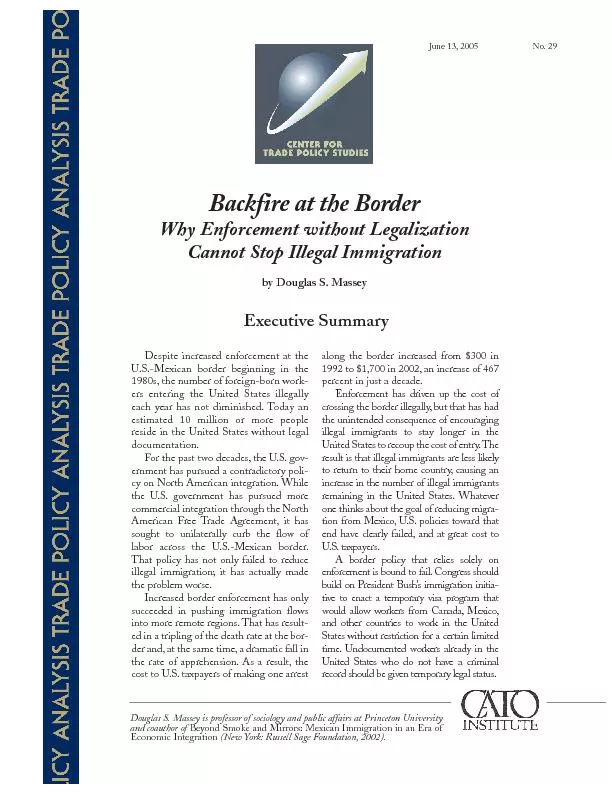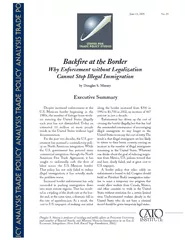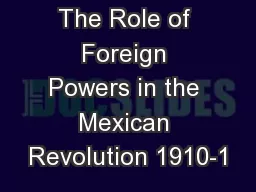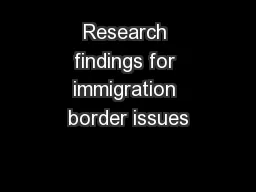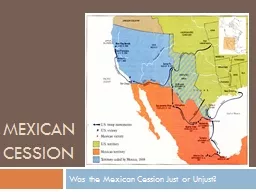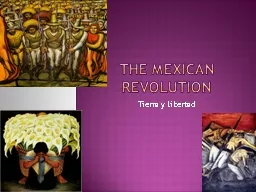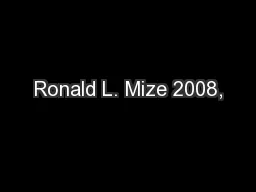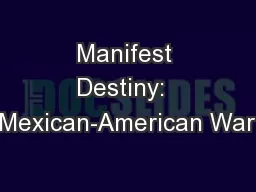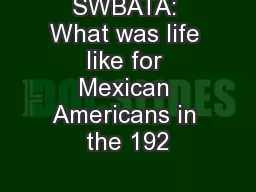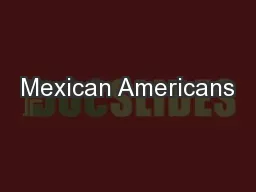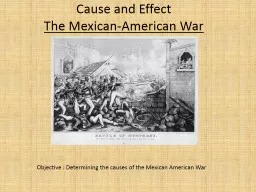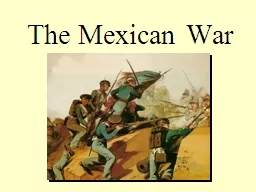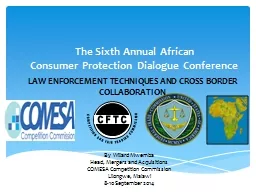PDF-Despite increased enforcement at theU.S.-Mexican border beginning in t
Author : debby-jeon | Published Date : 2016-03-01
Executive Summary PelosiCannonFlakeKolbeand GutierrezAlthough none of those proposals madeprogress in 2004after the elections PresidentBush restated his commitment
Presentation Embed Code
Download Presentation
Download Presentation The PPT/PDF document "Despite increased enforcement at theU.S...." is the property of its rightful owner. Permission is granted to download and print the materials on this website for personal, non-commercial use only, and to display it on your personal computer provided you do not modify the materials and that you retain all copyright notices contained in the materials. By downloading content from our website, you accept the terms of this agreement.
Despite increased enforcement at theU.S.-Mexican border beginning in t: Transcript
Download Rules Of Document
"Despite increased enforcement at theU.S.-Mexican border beginning in t"The content belongs to its owner. You may download and print it for personal use, without modification, and keep all copyright notices. By downloading, you agree to these terms.
Related Documents

